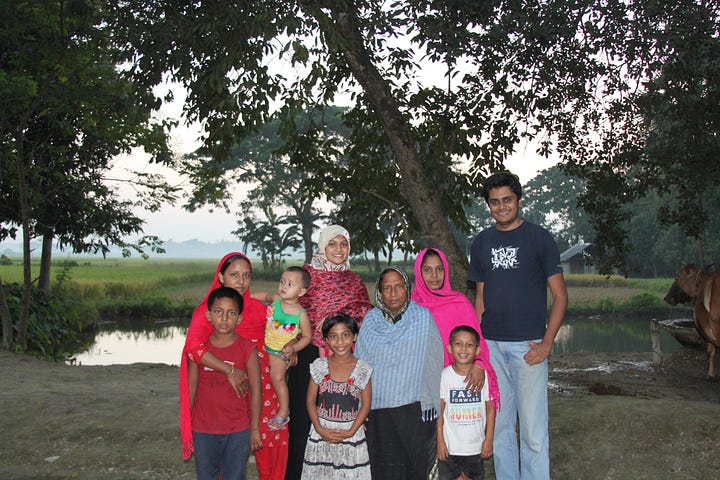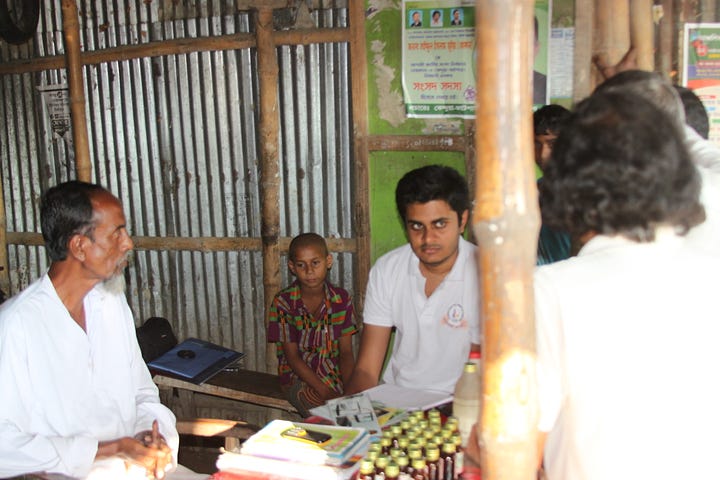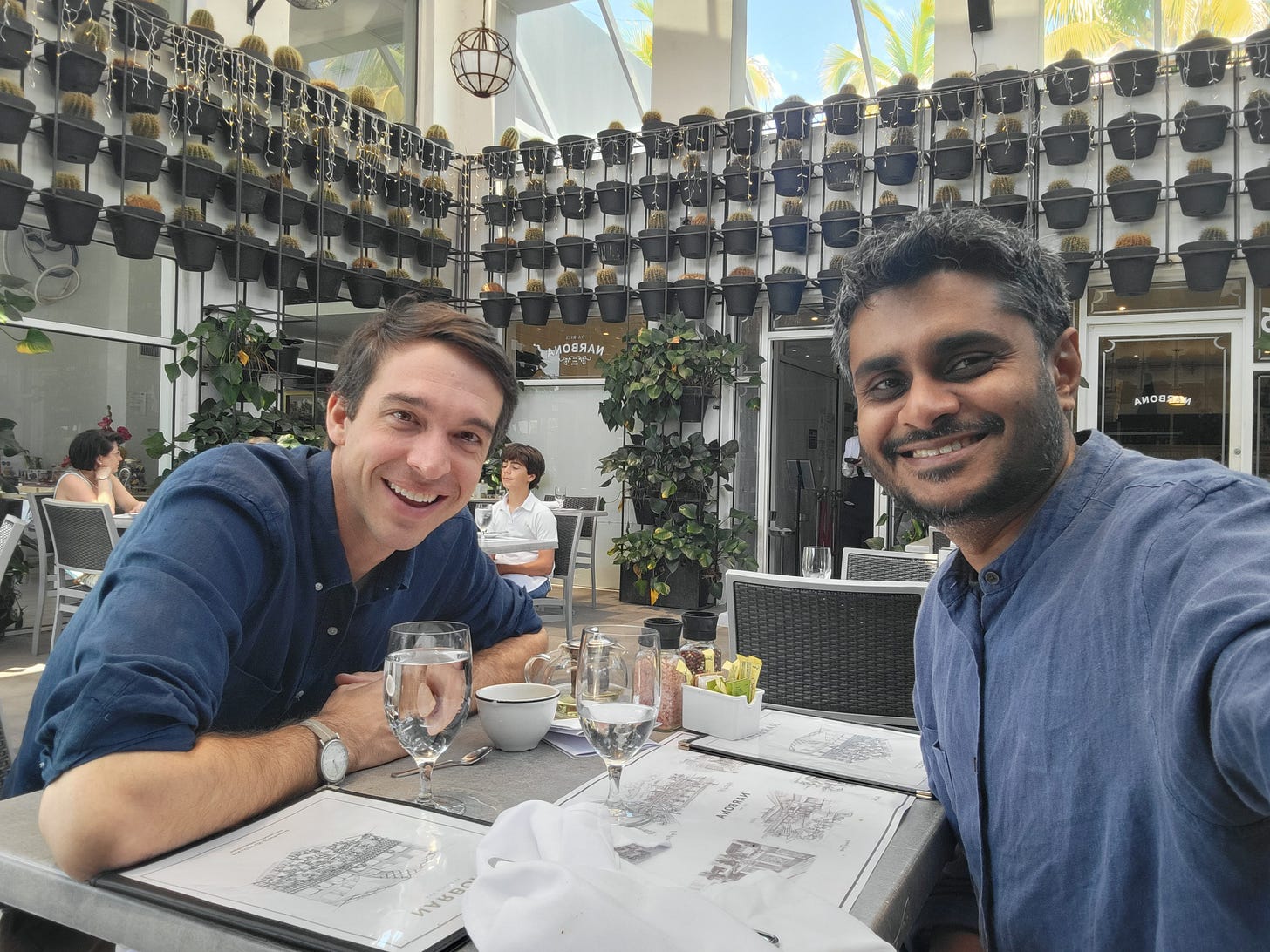The Origins (Part One: Disillusionment)
The first installment of a three-part origin story of how we got started on this big hairy audacious goal
How to provide billions of poor people a high-quality healthcare experience whenever they need it, wherever they are? That has been the question that has driven me, my personal mission at ClickDiagnostics/mPower, Jeeon and subsequently at Endless, and my continuing partnership with Matt Dalio, over the past 15+ years.
I started off on that journey first with ClickDiagnostics Inc., a startup founded out of Harvard/MIT in 2008 that envisioned using the first generation of smartphones as a platform to extend telemedicine services to remote and underserved areas of the world. Fresh out of college, having a background in both technology and public health, and inspired by the call to young people to build “Social Businesses” by Prof. Muhammad Yunus, I joined the stellar founding team and designed/led some pioneering projects in the as-yet unnamed field of mHealth, mainly with BRAC in Bangladesh but also for a period with the Egyptian Ministry of Health. Yet, as the projects and team grew and we rebranded (to mPower Social Enterprises) and established ourselves as a trusted name in digital health, a feeling in my gut grew stronger and stronger that however scalable and impactful the model of working through large government and non-profit organizations was, the way we were approaching it was not going to be the full and complete answer to that North Star question. Yes, I was frustrated with the slow pace at which large bureaucracies moved. I was certainly disillusioned by the politics, power dynamics and top-down nature of the global health industrial complex. I spoke about these frustrations at length subsequently as in the Keynote video below (and this 2015 Guardian column and a recent Aspen Institute book on Decolonizing Development), but I still did not fully understand the reason behind that disconnect as I had only seen things from the system’s perspective.
It was around this time of a nagging but subliminal discomfort that I met Matt Dalio for the first time in 2012, in a small buzzing cafe in Cambridge, MA. It was an energizing conversation to say the least - we were both 20-something year old budding entrepreneurs from vastly different backgrounds; yet in that very first meeting, we left with a sense that our life missions were aligned at some very deep level. Despite our formal relationship since evolving through many stages (through funder-researcher, investor-investee, and most recently employer-employee), that deep comradery and friendship we formed in that first meeting has luckily continued to this day.
Matt supported our first research project at mPower to do an anthropological “deep dive” (using then cutting-edge HCD methodologies) into rural healthcare in Bangladesh to understand it from the people’s perspective. It was during those two weeks of intimate living in the homes of rural Bangladeshis, hearing their deeply human dreams and aspirations and frustrations, and accompanying them on their trips to pharmacies and hospitals, that I first realized the source of the disconnect I had been feeling all along.


The short answer was this - our health systems simplify poor people’s health as a narrowly defined set of diseases to solve, and completely loses view of the complex and ever-changing tapestry of physical and mental health needs, aspirations, constraints, sufferings, etc. that every human (rich or poor) inevitably goes through in the course of their life.
“Healthcare is for the rich. For the poor, it’s just public health.” - Anonymous friend
Often, this focus on “sick-care” is further limited to those conditions that can kill people. Indeed, in mPower’s projects with BRAC and the Ministry of Health in Bangladesh, we were technologically upgrading programs exclusively focused on pregnancies and childbirth, one of the major drivers of mortality and hence a key component of the Millennium Development Goals (MDGs). Yet, just like you and me, poor people don’t just have occasional episodes of Malaria, Tuberculosis and Pregnancies and gratefully thrive through the intervening periods. It’s the banal but painful daily health issues - the back pains and persistent itches, the insomnias and panic attacks, the vertigo and light-headedness preventing one from going to work, and the sick 2-year olds at 2 AM in the morning - that cause an inordinate amount of suffering without due recourse from the health system.
(No doubt this was originally an intentional choice, since there are a lot of good reasons to simplify and focus - resource constraints, clear metrics for impact, lack of data and infrastructure to handle the complexity, etc. We have also certainly made a lot of progress, such as with maternal mortality and HIV, due to this “vertical integration”. However, if my experiences in global health over the past 15 years is any guide, we have lost sight of the original reasons why we made this choice, got stuck in our jargons and processes, and completely lost touch with people’s lived realities. These are also deeply interlinked with the colonial roots of global public health, the political economy of power and voice, the lack of easy ways to capture people’s needs, preferences and feedback, and the lack of incentives for providers and system designers to even consider it important to listen to patients’ voices. Each of these issues merit their own deep dives, and I will hopefully come back to these topics in future posts.)
In that and subsequent visits, I met a man who had broken his shin in a construction job, was forced to spend his life savings and sell family land to get 3 poorly performed surgeries at shady and exploitative private clinics, and still limped after 2 years without being able to get back to work. I met a bright 13 year old girl who stopped going to school after a psoriasis on her scalp caused her to lose all her hair. I encountered an old lady whose internal organ systems were all but decimated after getting administered powerful steroids by her local drug shop continuously for 12+ years to manage her chronic back pain (she died soon afterwards). These, like countless others, were the stories that were lost when you obsessed over the number of maternal and child deaths, and patted yourself on the back for the cases of HIV and TB treated. No doubt deaths from such preventable causes are tragic, and urgent needs we had to address as global health practitioners to begin with. But we are fooling ourselves if we believe we are building a real “HEALTH-care” system.
“Allah will take me soon, and I will finally be in peace.”
— An elderly woman to me, tired from a lifetime battling poverty, abuse, disease, and depression
That same visit also made it very clear to me that health systems, however well-meaning, often can’t replace the deeply trusting and human connections people have with their existing health providers and caregivers, whether that is the local midwife, chemist/druggist, traditional healer or the “village doctor”. This is due to a variety of reasons - both push factors (e.g. distance and cost of reaching care, the uncertainty that services and medicines will be available, the inherent power dynamic and social hierarchy between doctors and patients in a country like Bangladesh, the lack of incentives of public sector providers to do their best job, the lack of accountability for providing poor quality care, etc.), and pull factors (the longstanding trust and comfort with local providers, the convenience and proximity, their flexibility with payments, the range of services and products offered, etc.). No wonder therefore, that 70% of the population in Bangladesh still visited pharmacies as their first-point-of-care despite 18,000 government “Community Clinics” that had been built all over the country. By completely discounting existing providers as “quacks that will soon be irrelevant” and blithely building new facilities and cadres of providers, we were at best wasting resources and at worst relegating a vast section of the populace to unmonitored, substandard care.
This realization that we need to build solutions that meet people where they are, is what led me to start Jeeon, with the mission of figuring out how to leverage the vast existing infrastructure of informal community pharmacies across Bangladesh to provide high quality care to rural and underserved communities, and what convinced Matt to join our journey as an investor.
(Next up: I will write about our journey with Jeeon over the next 10 years and our main takeaways in Part Two of this Origin Story series)
***
If you have enjoyed this post, I only request that you leave a comment sharing your own stories, or why you disagree with any specific points. My intention from this is as much to reflect on my own learnings as to learn from my community. Please also forward to anyone else who might enjoy this post.



Love reading this wonderful write-up, Rubayat bhai. The deep dive experience with you, Ahmed, Shammi Apa, and others remains one of the most enriching HCD field experiments of my life. I learned so much from that immersive experience, specially on how pharmacies serve as the first tier of health services in Bangladesh. I'm eagerly awaiting the second part of the write-up!
Wonderful piece! I know part of the story but looking forward to read up on the rest!